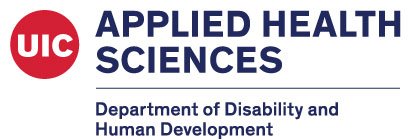Personally, I have never felt quite so humbled as when I had to think about curb cuts for the first time. Have you ever had to think about curb cuts? What is a curb cut, you ask? You know, where the curb…cuts down so the sidewalk meets the street without the bump of the curb. Here, I’ll just show you:
Curb cuts are well and good, because they make the sidewalk accessible to someone in a wheelchair or using a walker. Fantastic, right? The bad news is that in the cold Chicago winters, this tends to happen:
Rarely does someone shoveling the sidewalk think to clear the entire curb cut to the street; they usually just let people with use of their feet sort of climb over the mound of snow that has been shoveled into a mountain right where the curb cut occurs.
I am embarrassed to say that in my life I never thought about how this would affect someone using wheels for mobility, at least not until I was the personal assistant for someone with a neurodevelopmental disability who used a wheelchair. It is difficult to convey how frustrating it was for the two of us to make plans to go out, seeing mostly clear sidewalks and plowed roads, only to realize that we could not get over the curb cut at the end of a sidewalk. Sometimes we rerouted and found a new way. Sadly, other times we simply could not, and turned back.
Now at this point you may be asking yourself, who is this woman who is so angry about curb cuts, and what is her point?
Well hello there, my name is Sarah Weldy, and I am an occupational therapy student and trainee with the UIC LEND program. And for one, I want people to show some respect to the community by shoveling their sidewalks thoroughly! But more than that, I want to talk about the ADA.
The Americans with Disabilities Act was passed in 1990 and marked the beginning of accessibility in our country. There have been many positive, progressive effects of the ADA – it was a victory for it to be passed. As the ADA National Network describes: “the ADA is a civil rights law that prohibits discrimination against individuals with disabilities in all areas of public life, including jobs, schools, transportation, and all public and private places that are open to the general public.”
BUT –
Systemically, we see the ADA not being properly enforced. As you dive into the world of disability, you are sure to find how the follow through on this legislation has been less than enough. For example, the ADA requires accessible walkways so the city puts in curb cuts – but then doesn’t clear the opening when it snows. I am sure you can imagine a whole flurry (no pun intended) of other situations where the ADA should be able to remove physical barriers – but it extends to intellectual and developmental disabilities too! When it is expensive or inconvenient, individuals, businesses, schools, counties, and towns often simply do not put in the effort to be adherent with the ADA – whether making a ramp for a wheelchair user or giving someone extra needed time to complete a task. And I do not know about you, but until I was immersed in disability advocacy, I simply assumed that everyone was adherent!
As a future occupational therapist, I see it as my responsibility to educate people on this issue and help make change. Within my field, we heavily consider how the environment a person is in can be modified to make their life more fulfilling. Since I am not a lawyer, I will not personally be able to sue negligent organizations that are harming my clients… but I can educate clients on how to self-advocate and yes, seek legal counsel. I can write letters to my local politicians and advocacy groups when I see something wrong. And you can too, in fact, to start you off I want you to bookmark this fantastic organization, Access Living, that is Chicago-based and has a civil rights issue hotline email…with three cases cooking right now!
And lastly, you better believe I will shovel my curb cuts. Oh, will I shovel. Will you join me?
References:
Image 1:Wikipedia.org/curbcut
Image 2: cortlandstandard.net
https://adata.org/learn-about-ada
https://www.accessliving.org/our-services/legal-services/


















